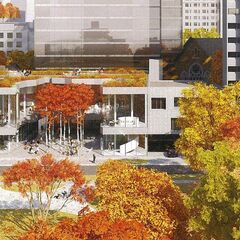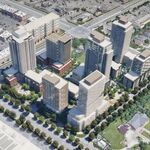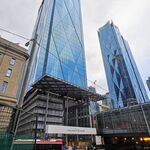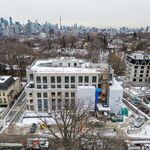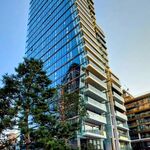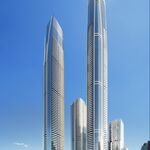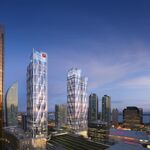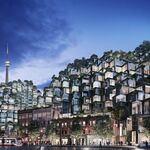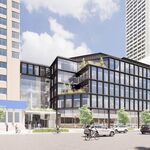As Toronto's downtown core continues its rapid densification, occasionally a project pops up to remind us that not all downtown development is in the form of high-rises, and that cultural development is still thriving in the city amidst the condo craze. Recently, a rezoning application has been submitted to build an Estonian Cultural Centre at 9-11 Madison Avenue, an infill site just north of Bloor Street and east of Spadina Subway Station, that features an eye-catching design from local firm Kongats Architects.
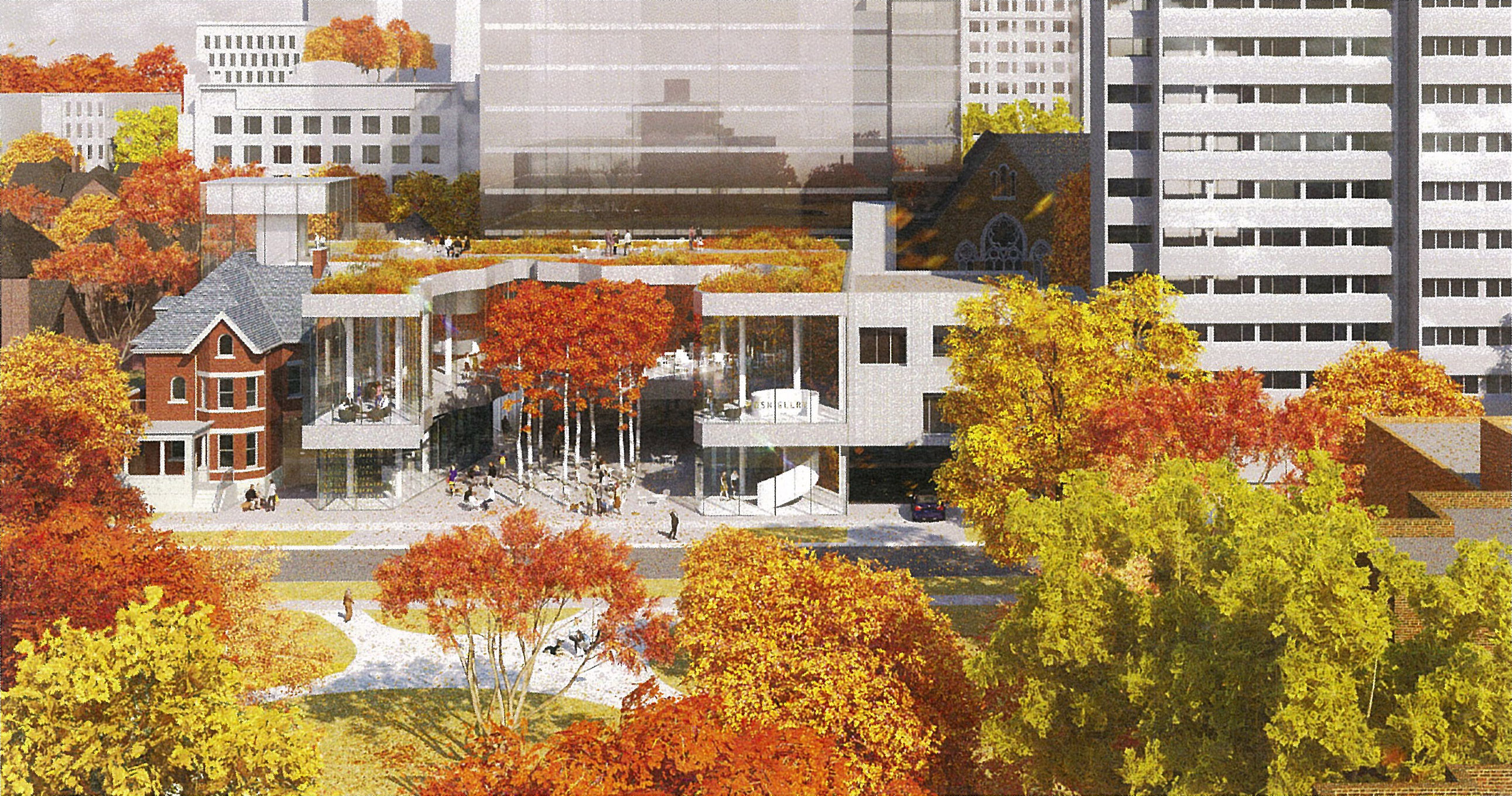 Rendering of the Estonian Cultural Centre, image courtesy of Kongats Architects.
Rendering of the Estonian Cultural Centre, image courtesy of Kongats Architects.
The development would see construction of a 3-storey U-shaped building attached to a repurposed historic house that would contain the relocated services of Estonian House, complete with a new privately-owned publicly-accessible space (POPS) located in the courtyard. The project follows the historical legacy of Estonian architects and their contributions to the Modernist development of Toronto, from Uno Prii and his iconic apartment blocks, to Michael Bach's Modernist churches, to Taivo Kapsi, who worked with Viljo Revell on City Hall, and his concrete houses.
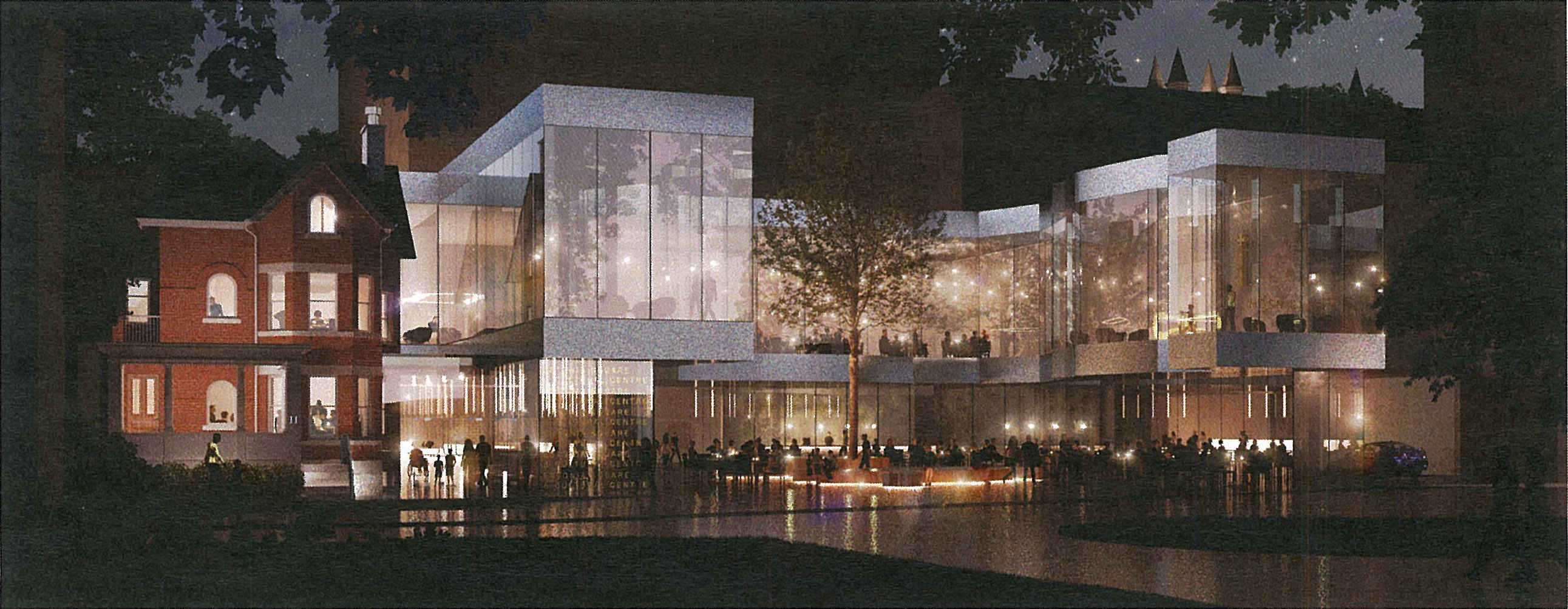 Rendering of the Estonian Cultural Centre, image courtesy of Kongats Architects.
Rendering of the Estonian Cultural Centre, image courtesy of Kongats Architects.
The new building would replace an existing City-owned surface parking lot located directly above the Bloor-Danforth subway tunnel at 9 Madison Avenue. The site was declared surplus by the City in 2011 and was subsequently transferred to Build Toronto, who have entered into an agreement to sell the site to the Estonian Credit Union, the Estonian Foundation of Canada, and Tartu College. In addition, the property to the north at 11 Madison Avenue, which contains an existing historic house, was purchased by the Estonian Credit Union with the intention of consolidating the two properties.
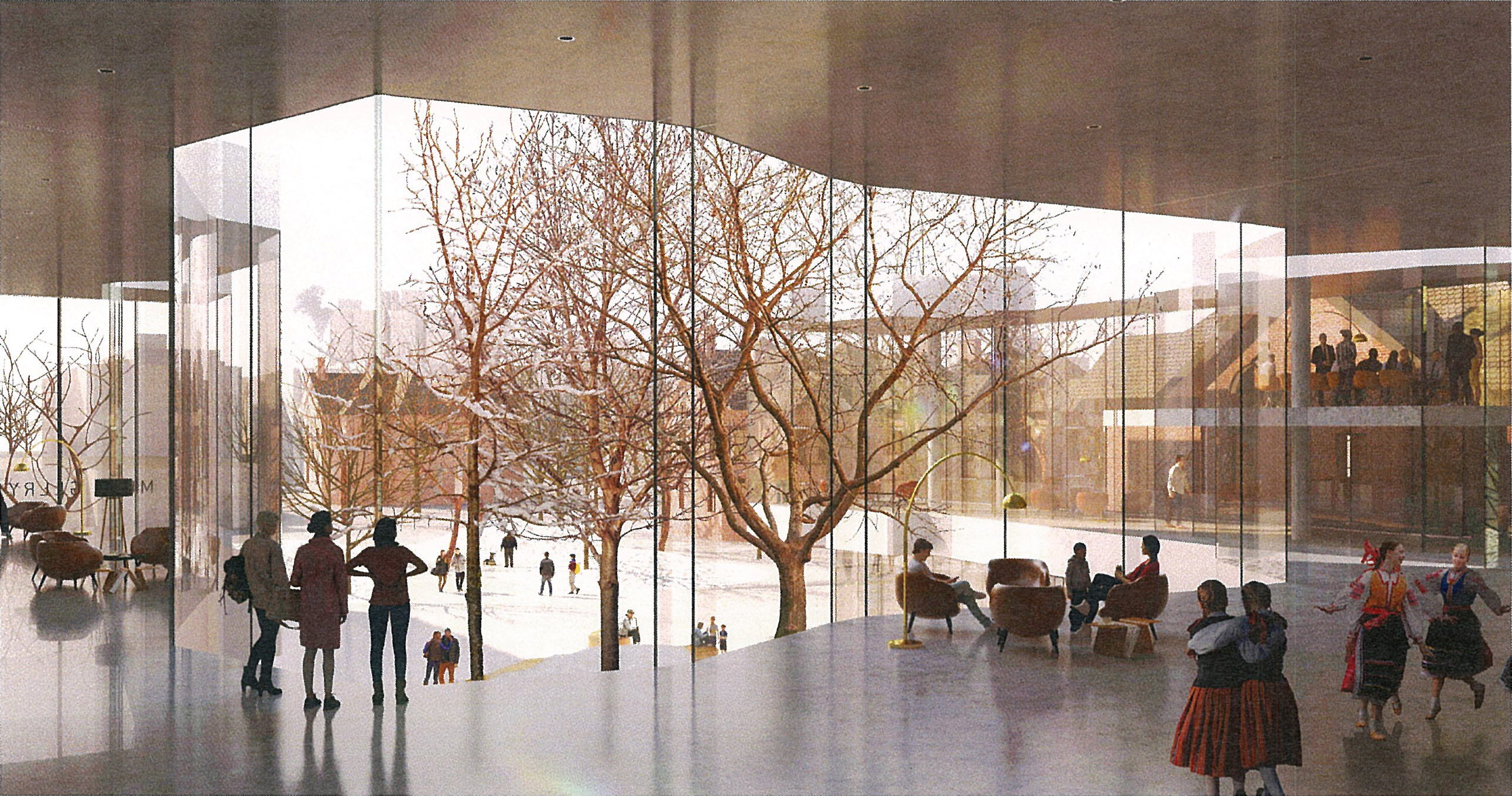 Rendering of the view into the courtyard, image courtesy of Kongats Architects.
Rendering of the view into the courtyard, image courtesy of Kongats Architects.
The 3,225-square-metre building is intended as a cultural centre, community hub, and gathering place for Toronto's Estonian community. The U-shaped building will feature a POPS fronting onto Madison Avenue; a mid-block connection from the POPS to Huron Street to the east, passing underneath the building and through the adjacent proposal at 300 Bloor West; and an interior connection to the neighbouring Tartu College on Bloor Street to the south.
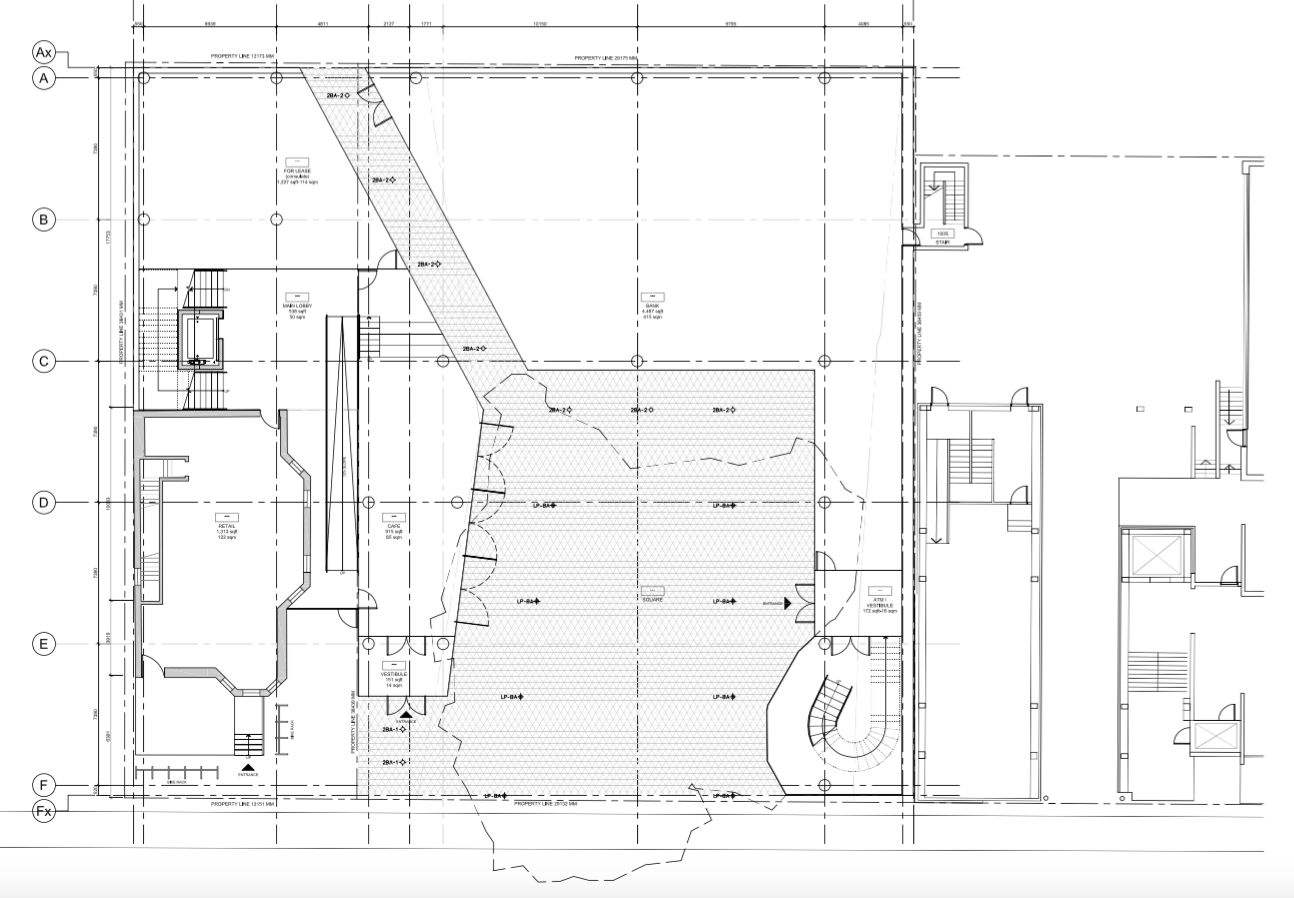 Ground floor plan, image courtesy of Kongats Architects.
Ground floor plan, image courtesy of Kongats Architects.
The 12-metre-high building is composed of glazing and metal panels and offers an unimposing street presence, pulling itself back into a courtyard with a unassuming massing that welcomes visitors to enter the property. The upper two floors of the building around the courtyard follow a rough outline of the country of Estonia, giving it a unique appearance and irregular shape.
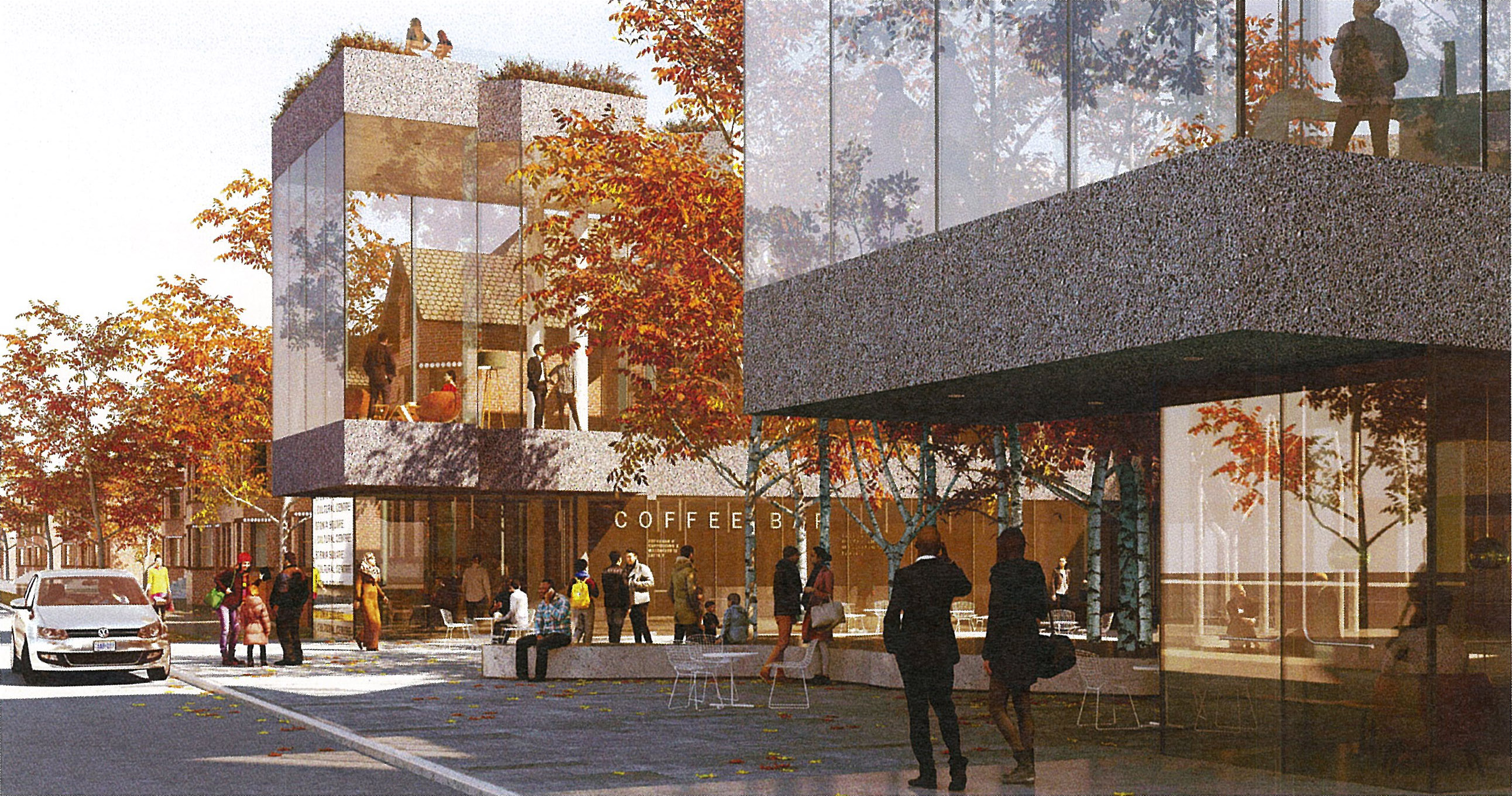 Rendering of the Estonian Cultural Centre, image courtesy of Kongats Architects.
Rendering of the Estonian Cultural Centre, image courtesy of Kongats Architects.
The ground floor of the building will contain a retail space within the restored historic house, and a cafe and Estonian Credit Union branch within the new building fronting onto the courtyard. Entrances to the main building will be located off of Madison Avenue, the courtyard, and the mid-block connection to Huron Street, with the main entrance situated between the house and the new building providing access to the main lobby via a ramp.
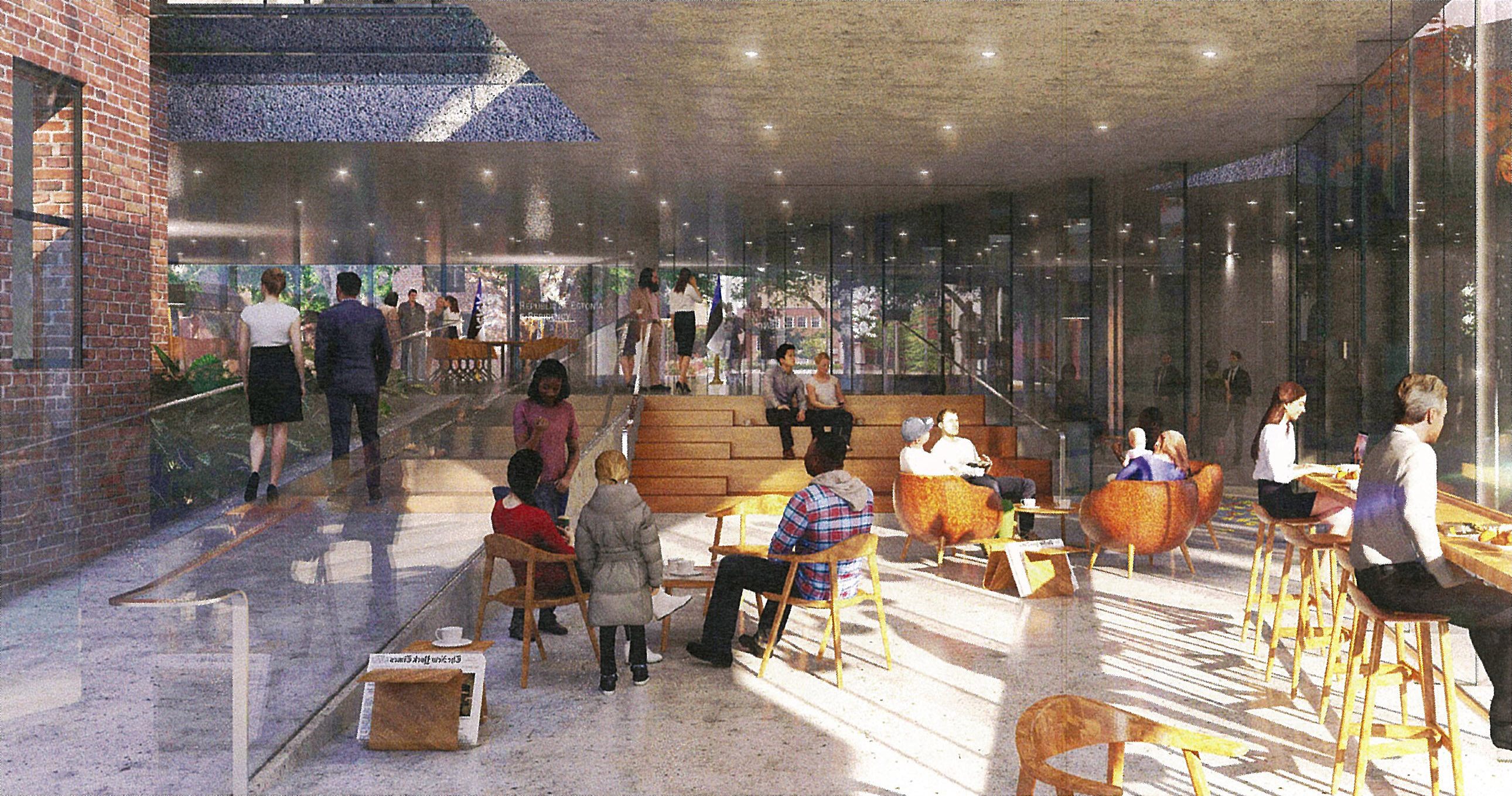 Rendering of the cafe, image courtesy of Kongats Architects.
Rendering of the cafe, image courtesy of Kongats Architects.
The second floor will house a two-storey grand hall, along with an antechamber containing a bar, flex space, and office space. The third floor will contain meeting rooms, a board room, and a studio. In addition, the building will contain an accessible rooftop terrace and green roof, which will be oriented toward the courtyard. An additional two to three units of leasable space will be provided on the ground floor and basement levels.
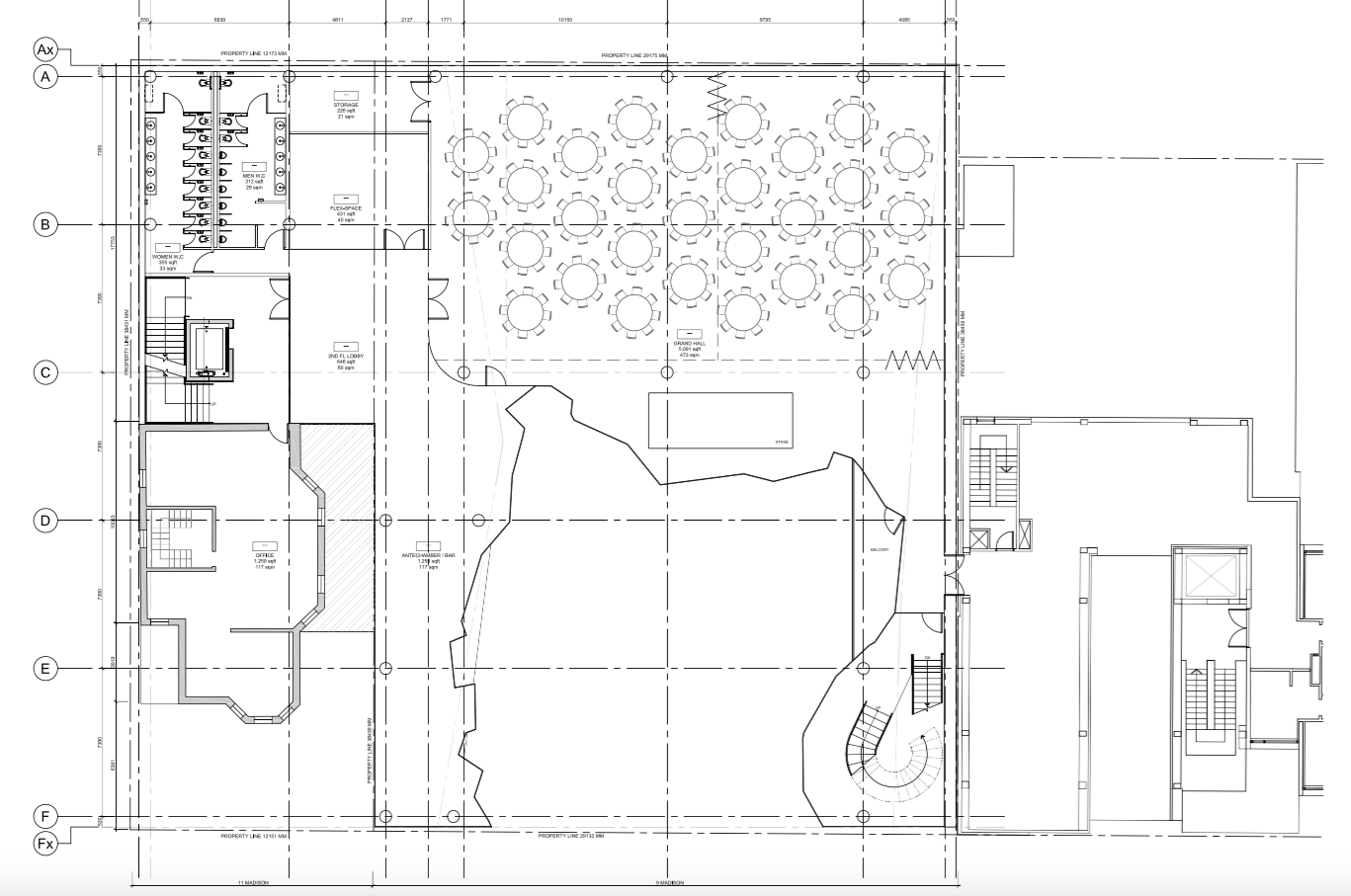 Second floor plan, image courtesy of Kongats Architects.
Second floor plan, image courtesy of Kongats Architects.
The development will be focused solely on the user and pedestrian experience, with no additional parking and all loading docks and service spaces provided by the existing facilities in the neighbouring Tartu College.
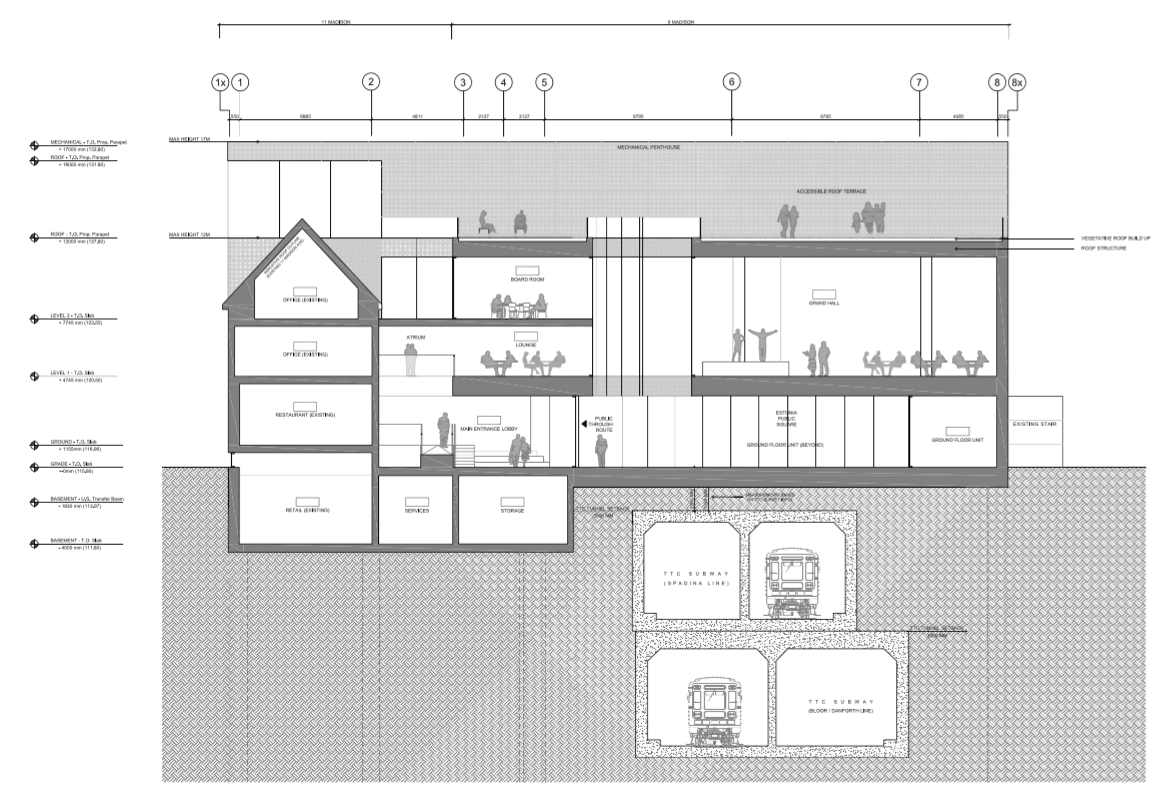 Cross-section of the building, image courtesy of Kongats Architects.
Cross-section of the building, image courtesy of Kongats Architects.
Stay tuned for updates as the project works its way through the planning process. In the meantime, you can tell us what you think by joining the discussion on the associated Forum thread, linked below, or by leaving a comment in the space provided on this page.
| Related Companies: | Bousfields, Entuitive, Insitu Contractors Inc, LEA Consulting, RWDI Climate and Performance Engineering |

 3.9K
3.9K 



